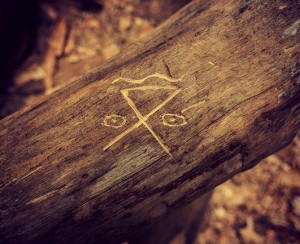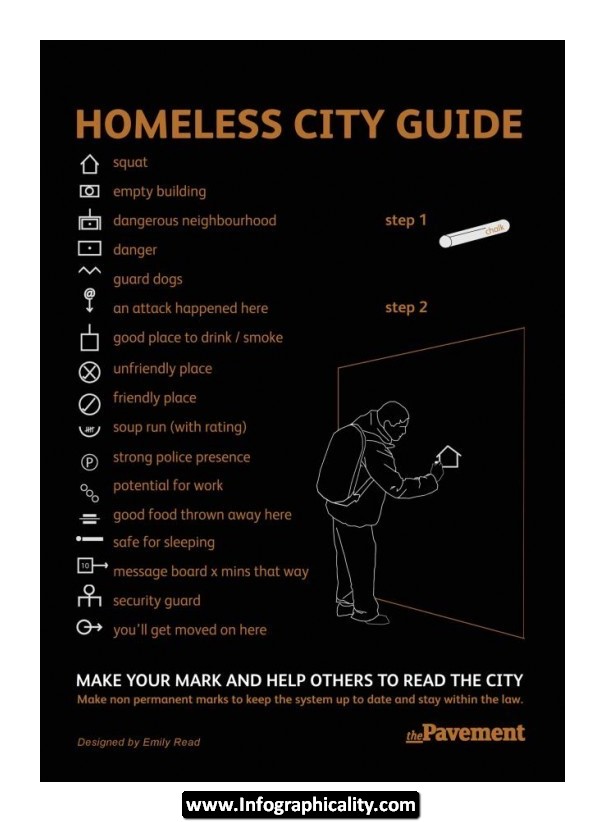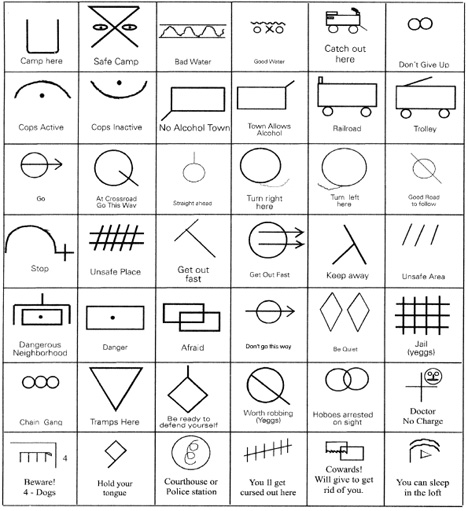The beloved American hobo (you know, with the stick over his shoulder carrying all of his belonging in a bandana), is actually a member of a non-verbal communication network… one that was developed in the Great Depression and lives on today.
Hobo pictograms are very real. They also contain useful, if not even life-saving information in a crisis. Drifters and the homeless use these symbols to communicate important ideas about law enforcement, water quality, aggressive dogs, and where it’s safe to camp.
Learning this language provides a couple of critical advantages to you:
1.) Of course, you may use these symbols communicate something important to a friend or relative (you don’t need to be homeless to use these signs).
2.) Equally important for you, however, may be your ability to locate and recognize these signs scrawled on bridges, lampposts, and rock walls. In a time of need, you may find signs like the one to the right to be a lifesaver. (FYI – the carving in the wood to the right is a combination of two common signs, one for “safe camp” and another for “good water”)
Now this hidden language has been around a long time, and it’s not quite as standardized as, say, trucker CB lingo, but many signs can be found when you keep your eye out.
Clearly, this living language of symbols is by no means standardized, several symbols seem to overlap in their meanings. Still, studying up on these symbols will help you gather important clues left by some surprisingly observant drifters. You can also use this “homeless” lingo to leave secret messages to your clan.
These signs may give you critical intel about the local area. What’s more these signs may give you insight about the local dangers, including the knowledge that dangerous or opportunistic vagrants are in the area looking for “marks” to victimize. For example, there’s literally a sign for “Worth robbing.”
Signs about security, empty buildings, bad water, and unsafe areas could come in very handy when other communication methods are down.




